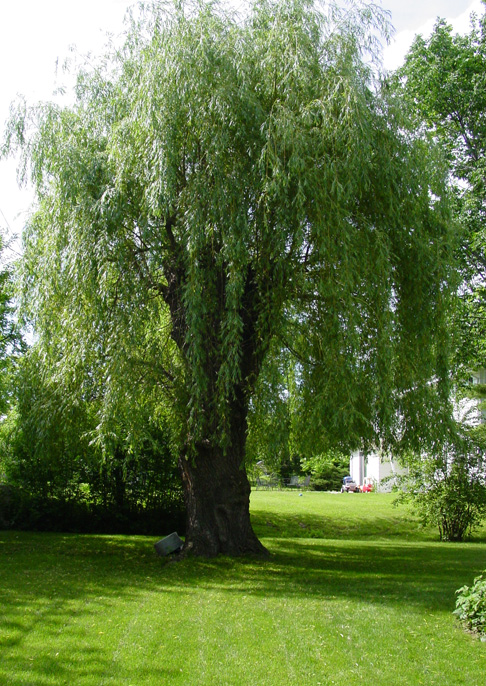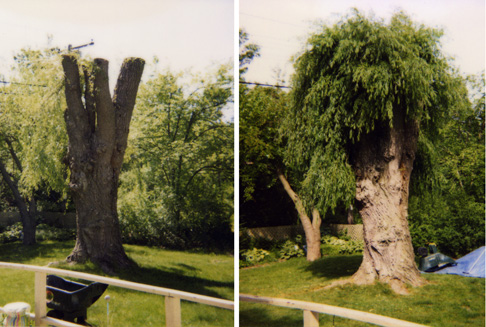When we first moved into our new home, the neighborhood had a lot of stately old weeping willow trees. In fact our next-door neighbor’s willow sported a large tree house close to our lot line and we first thought it might on our property. I was a bit disappointed to find out that it belonged to our neighbor since I have always loved weeping willows and I really liked that tree house.
Most of those willow trees seemed to be about the same age, in fact we think the village had them planted them some 50 years ago to help with water issues in our area and they were beautiful. However weeping willows are short-lived trees and since they were now old, they have become a real problem. Willows are huge and when they fall, they do a lot of damage. It is especially scary if the tree is located near your house. Every year we see more old willow trees cut up and stacked by the curb waiting for the village to remove them and chip them into mulch. It’s a very sad sight.
One of our closest neighbors had four of these giant willows in their yard. The trees shaded the deck making their backyard very pleasant on summer afternoons, but in the last ten years they’ve had to remove three of those trees. When their last weeping willow tree came into question, the arborist suggested “pollarding” or cutting off the top of the tree and leaving a tall stump. He kept saying that it would look much like a palm tree when it filled out. My neighbors agreed to try the new pruning method in an effort to save their tree.
After pruning it was an ugly thing, it looked tall, bare and slightly embarrassed. When it began to grow back we were all hopeful that the tree would fill out and stay healthy. That was in the summer of 2009 and the tree has indeed flourished. It doesn’t really look like a palm tree, actually I think it has more of a lollipop shape, but it is attractive and healthy.
My neighbors have more upkeep now since their tree needs pruning to keep it shaped nicely, but they love their tree and are glad that they decided to keep it.





